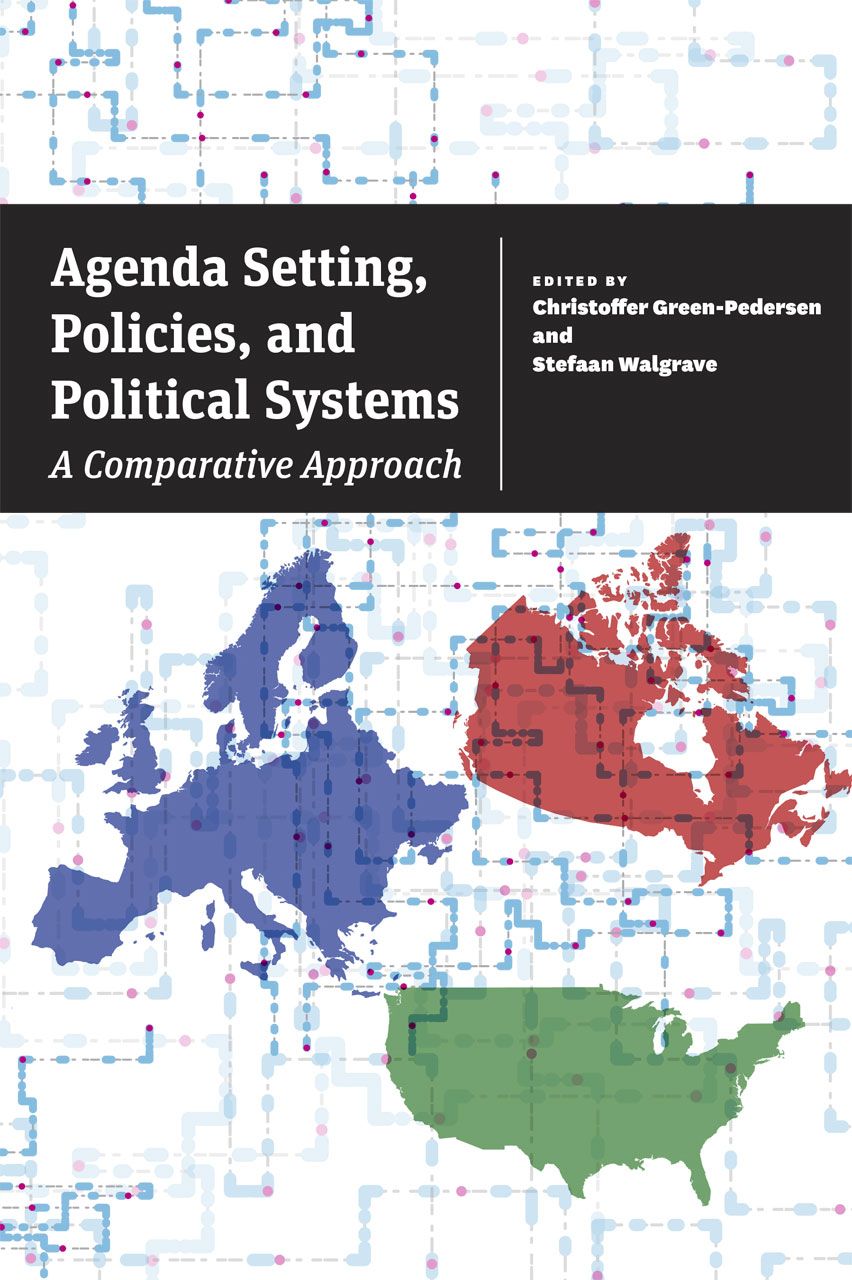Before making significant policy decisions, political actors and parties must first craft an agenda designed to place certain issues at the center of political attention. This agenda-setting approach comes under the spotlight in this new collection, with case studies from across Europe and the rest of the world. Sophie Lecheler finds that readers are offered a number of well-executed country case studies, paired with insights into the methodological framework used by all authors of this book.
 Agenda Setting, Policies, and Political Systems: A Comparative Approach. Edited by Christoffer Green-Pedersen and Stefaan Walgrave. University of Chicago Press. May 2014.
Agenda Setting, Policies, and Political Systems: A Comparative Approach. Edited by Christoffer Green-Pedersen and Stefaan Walgrave. University of Chicago Press. May 2014.
Agenda setting is a theoretical approach popular in various social sciences. For political researchers, it enables the analysis of the (changing) power relationships between political parties, institutions and other societal stakeholders. Agenda setting focuses on political issues and information as the expression of political conflict and decision-making. In this sense, as Christoffer Green-Pedersen and Stefaan Walgrave remark in their introductory chapter, agenda setting “tackles political systems indirectly by studying those systems in action and focusing on how they process issues” (p. 13). In this book, Green-Pedersen and Walgrave have collected a number of excellent empirical studies of political agenda setting research. The book is the product of a collaborative effort of the Comparative Agendas Project. It is therefore very specific in its theoretical and methodological approach.
The book is structured into two main parts. The first part, counting six chapters, covers case studies from the United Kingdom, the United States, France, Denmark, the Netherlands and Switzerland. Chapters in this first part of the book focus on the relationship between parties and the issues they favour – both in election and non-election periods. Each chapter provides an agenda setting analysis of multiple political issues such as immigration, law & order and the environment over extended periods of time. For instance, in Chapter 2, John, Bevan, and Jennings analyse UK political data (Speech from the Throne and acts of Parliament) ranging from 1946 to 2008. They aim to show how change of party in government influences how important an issue is on the national agenda. The theoretical framework of this chapter is, like others in this book, based on the idea that political parties capitalize on certain issues as part of the policy agenda and that each party aims to be opinion leader on a limited number of issues. However, the results in this chapter, as well as in a number of others, point towards a more complicated political agenda setting process. The UK case shows that the importance of a political issue did not always change when Labour or Conservatives took power from one another. Another example of this complexity is provided in Chapter 4. Here, Brouard, Grossman and Guinaudeau can show that political parties in France may shift their issue priorities rather than claiming one issue over longer periods of time. Their analysis also illustrates that the emergence of far-right parties on the scene will impact how important mainstream parties consider certain aspects of the policy debate.
The second part of this book addresses changing institutional structures and includes data from Germany, Belgium, Italy, Spain and Canada. Several chapters showcase country contexts where major institutional changes shape political debates (e.g., Chapter 8 covers Germany’s Reunification). In addition, this second set of studies adds more insights as to how political agendas are formed. For example, in Chapter 11, Chaqués-Bonafont, Palau and Muñoz Marquez highlight the importance of external factors such as unemployment peaks or terrorist attacks for political agenda setting in Spain. Contrastingly, in Chapter 12, Foucault and Montpetit are able to show how the inherent political structure of a country (in their case federalist Canada) will shape political decision-making. At this point in the book, it is up to the reader to compare findings from different country case studies. What is notable, however, is that each chapter also offers another piece of the theoretical puzzle and can thus enrich the reader’s understanding of how exactly political agendas form and how they impact political decision-making.
This means that this book also has something to offer for those interested in the theoretical development of (political) agenda setting. In Chapter 1, the editors offer a short introduction into the field. This introduction might be too short for readers who are totally unfamiliar with agenda setting, but will offer a number of new thoughts for those who have encountered it before. In the last chapter, the editors provide a number of points as to why political scientist should use agenda setting in their own research. They (correctly) state that agenda setting is a neat, well-defined and easily applied analytical instrument that may be used to investigate politics in a variety of contexts. Most importantly, however, this chapter contains a summary and comparison of the findings presented in each chapter (Table 13.1, p. 223).
In sum, this book contains a wealth of information on a variety of countries and extended periods of time. It also offers novel views on the further theoretical and empirical development of the agenda setting approach within political research. This book is a great read for those interested in political agenda setting or the politics of one of the countries covered in the book. It might, however, be too specific for those who are very unfamiliar with the agenda setting approach. As the editors themselves note this book does not contain cross-country comparisons. However, it does offer a number of well-executed country case studies, paired with insights into the methodological framework used by all authors of this book.
This review originally appeared at the LSE Review of Books.
Please read our comments policy before commenting.
Note: This article gives the views of the authors, and not the position of USApp– American Politics and Policy, nor of the London School of Economics.
Shortened URL for this post: http://bit.ly/1owVe5z
——————————————–
Sophie Lecheler – Amsterdam School of Communication Research
Dr Sophie Lecheler is an Associate Professor in Political Communication and Journalism at the Department of Communication Science at the Amsterdam School of Communication Research (ASCoR) at the University of Amsterdam, The Netherlands. Her research focuses on political journalism in the EU and the effects of journalistic news on citizens’ political attitudes and behaviour. She is currently working on a project on the role of emotions in European political communication. Twitter: @Sophelpoffel. Read reviews by Sophie.






